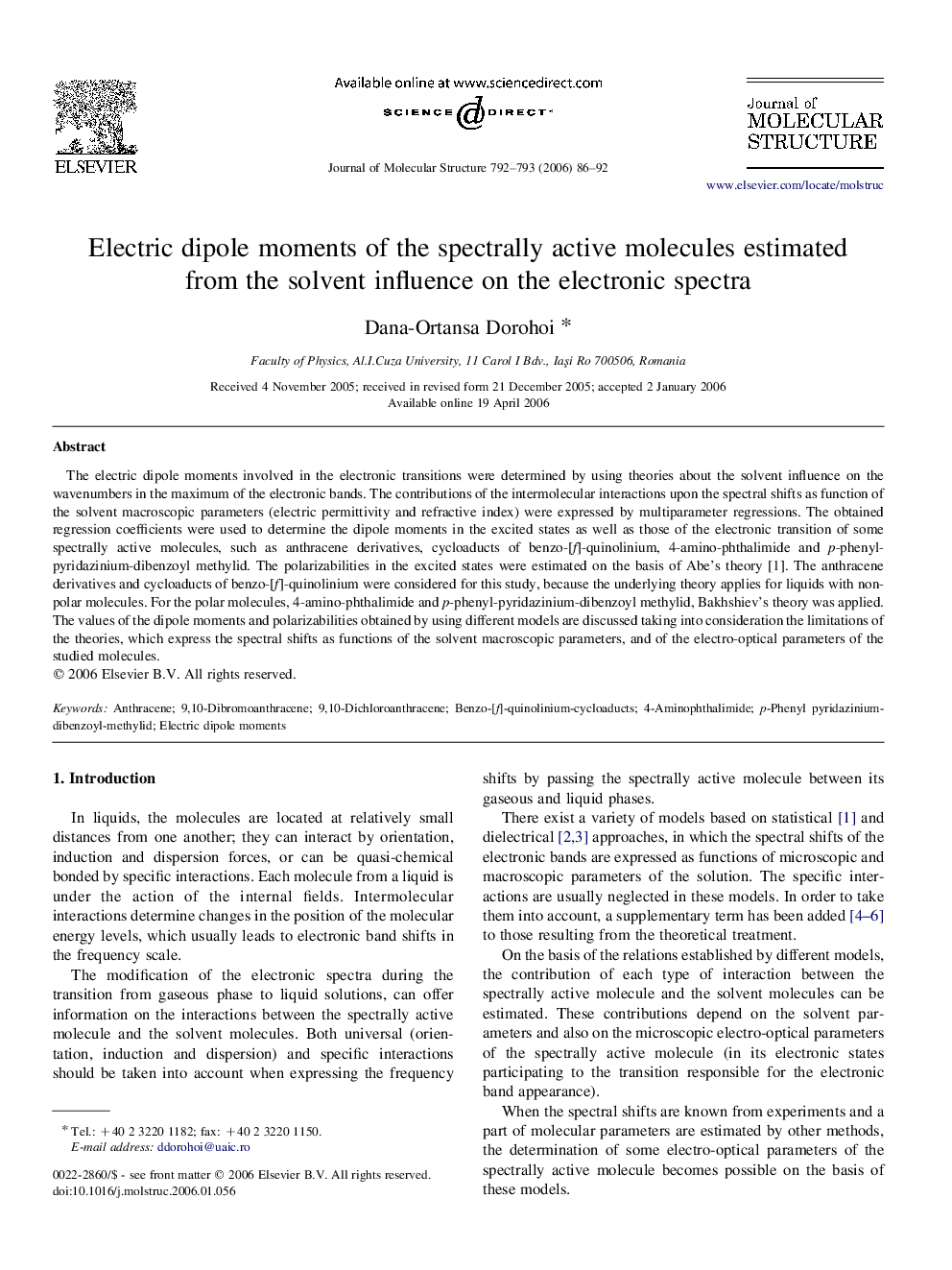| Article ID | Journal | Published Year | Pages | File Type |
|---|---|---|---|---|
| 1404597 | Journal of Molecular Structure | 2006 | 7 Pages |
The electric dipole moments involved in the electronic transitions were determined by using theories about the solvent influence on the wavenumbers in the maximum of the electronic bands. The contributions of the intermolecular interactions upon the spectral shifts as function of the solvent macroscopic parameters (electric permittivity and refractive index) were expressed by multiparameter regressions. The obtained regression coefficients were used to determine the dipole moments in the excited states as well as those of the electronic transition of some spectrally active molecules, such as anthracene derivatives, cycloaducts of benzo-[f]-quinolinium, 4-amino-phthalimide and p-phenyl-pyridazinium-dibenzoyl methylid. The polarizabilities in the excited states were estimated on the basis of Abe's theory [1]. The anthracene derivatives and cycloaducts of benzo-[f]-quinolinium were considered for this study, because the underlying theory applies for liquids with non-polar molecules. For the polar molecules, 4-amino-phthalimide and p-phenyl-pyridazinium-dibenzoyl methylid, Bakhshiev's theory was applied. The values of the dipole moments and polarizabilities obtained by using different models are discussed taking into consideration the limitations of the theories, which express the spectral shifts as functions of the solvent macroscopic parameters, and of the electro-optical parameters of the studied molecules.
